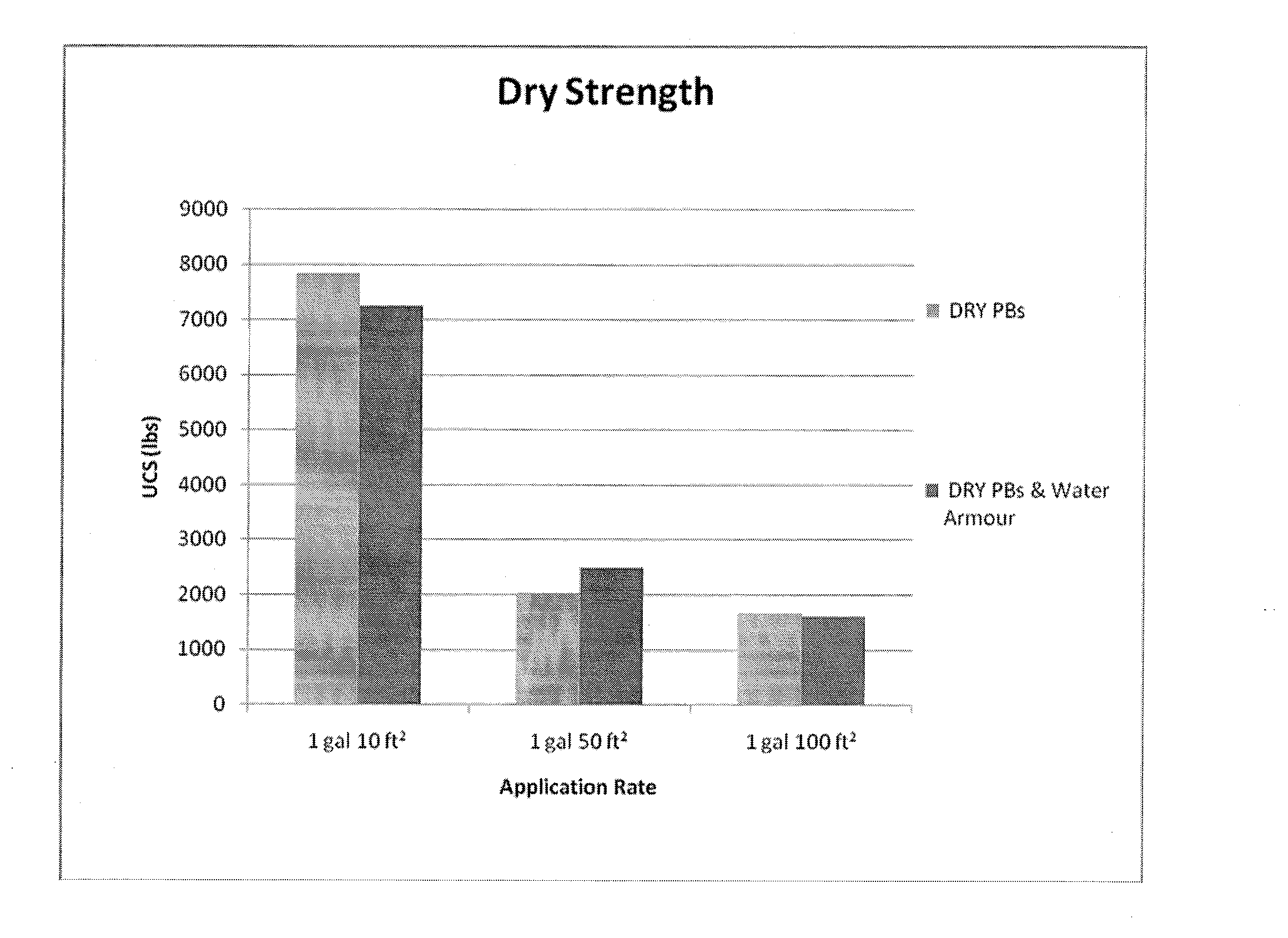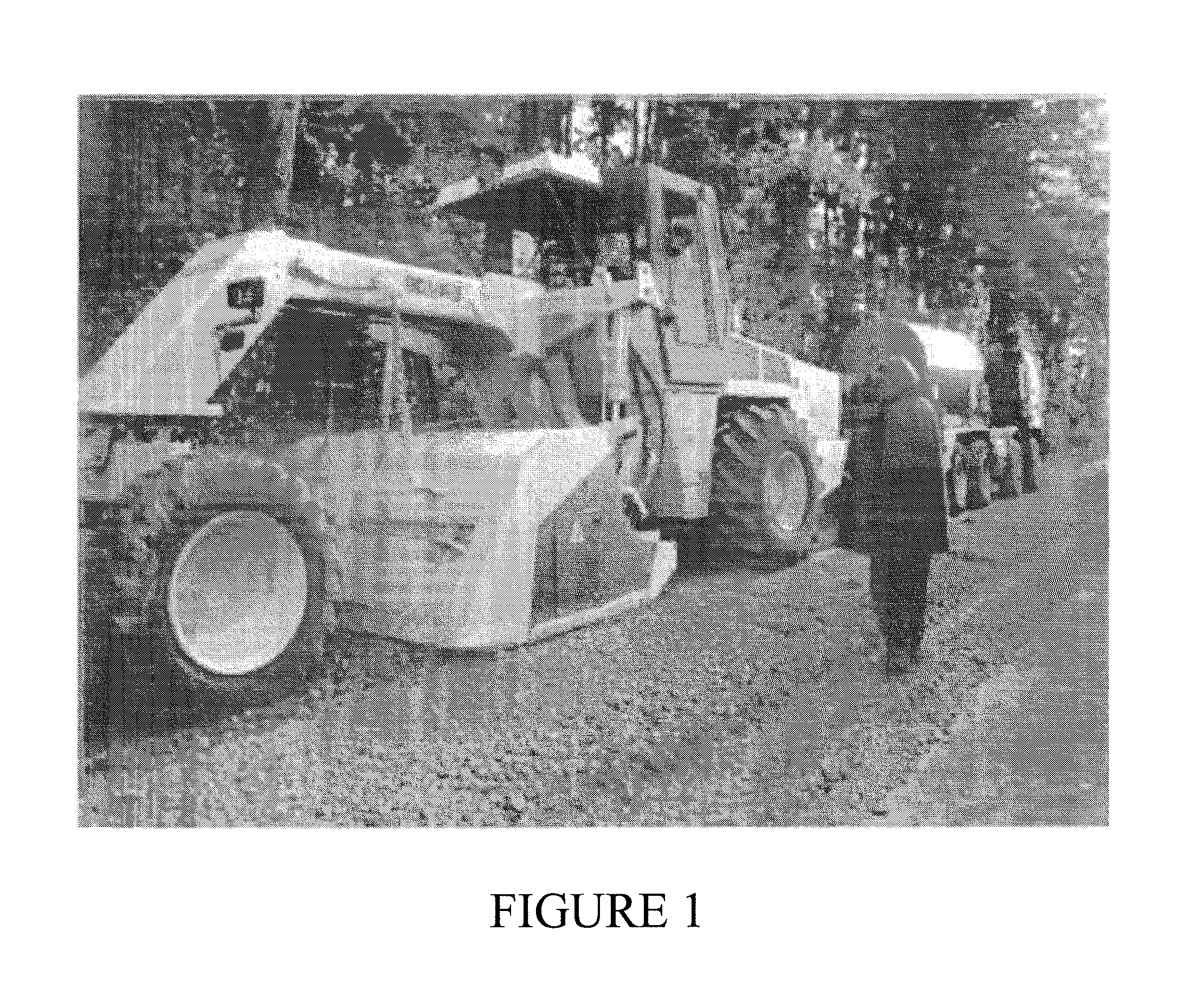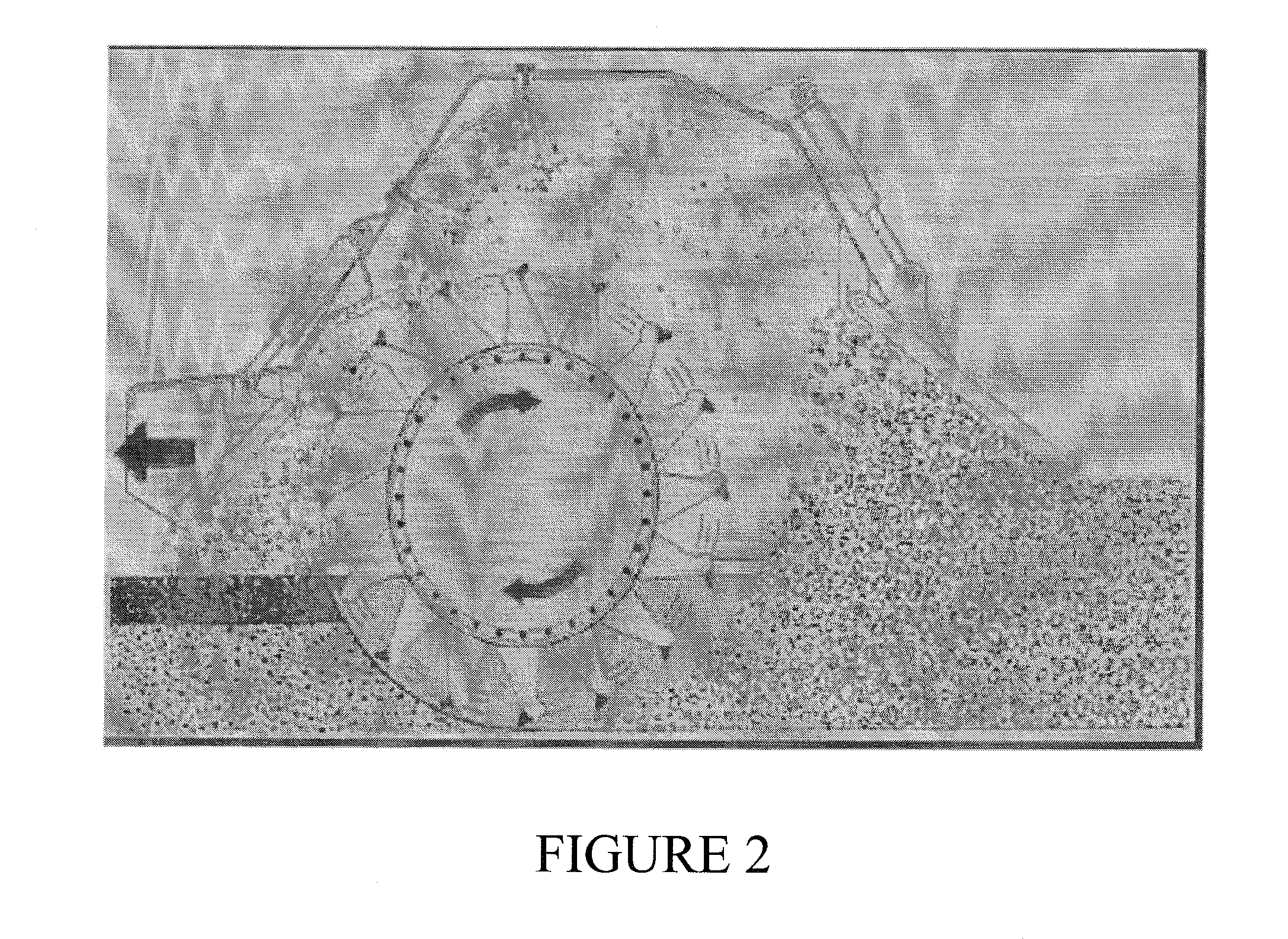Method and composition for modifying soil and dust control
a technology of soil and dust control and composition, which is applied in the direction of other chemical processes, roads, ways, etc., can solve the problems of water damage, loss of surface cohesion and road compaction, and constant plague of roads
- Summary
- Abstract
- Description
- Claims
- Application Information
AI Technical Summary
Benefits of technology
Problems solved by technology
Method used
Image
Examples
Embodiment Construction
[0026]In one embodiment of the present invention, a composition for improving the properties of soil or other road base materials is provided. Specifically, a blended mixture of the chemical composition detailed below is capable of improving the dust retardant, water repellant, and soil stabilization properties of soil or other road base materials. Incorporating the chemical improvement composition into soil, or other road base materials, and then compacting, provides superior resistance to surface deformations and deterioration by increasing the load-bearing strength—in some cases, as much as 500%—of the roadway, greatly reducing dust caused by traffic or weather, and eliminating capillary water uptake that results in moisture damage to the road. This invention is an improvement over traditional methods because it provides a composition that can be applied in a single application phase, under a wide range of ambient temperatures and conditions, to resolve all of the above problems ...
PUM
| Property | Measurement | Unit |
|---|---|---|
| width | aaaaa | aaaaa |
| depth | aaaaa | aaaaa |
| depth | aaaaa | aaaaa |
Abstract
Description
Claims
Application Information
 Login to View More
Login to View More - R&D
- Intellectual Property
- Life Sciences
- Materials
- Tech Scout
- Unparalleled Data Quality
- Higher Quality Content
- 60% Fewer Hallucinations
Browse by: Latest US Patents, China's latest patents, Technical Efficacy Thesaurus, Application Domain, Technology Topic, Popular Technical Reports.
© 2025 PatSnap. All rights reserved.Legal|Privacy policy|Modern Slavery Act Transparency Statement|Sitemap|About US| Contact US: help@patsnap.com



